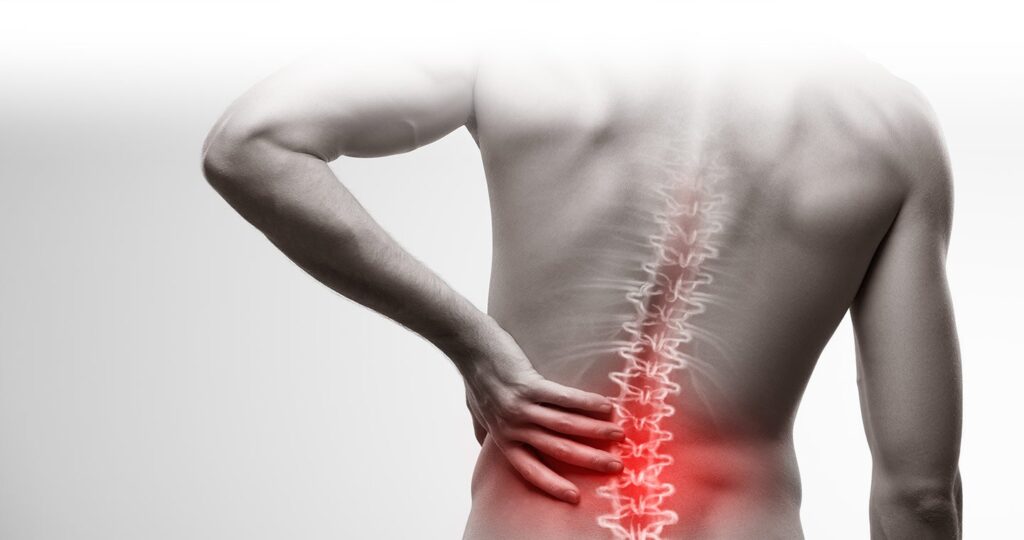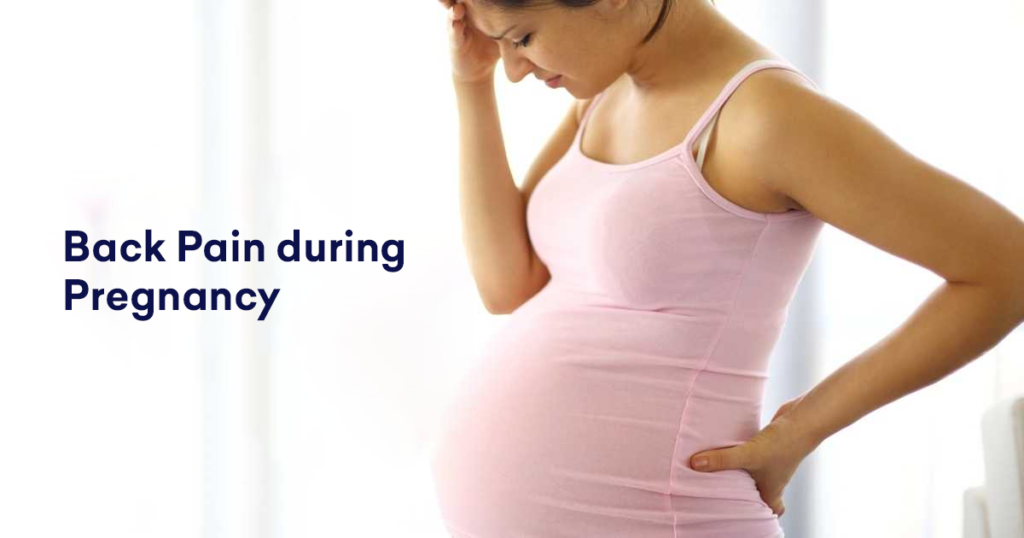I. Introduction
Millions of people all around the world suffer from chronic back pain. Pain may range from being annoying to debilitating, drastically altering one’s capacity to enjoy life. This article will examine the causes, different types, diagnosis, treatment options, pain relief exercises, back pain during pregnancy, prevention measures, and the need of getting the right medical help.

II. Types of Back Pain
- Pain that comes on quickly and lasts just a short while as a consequence of an injury, strain, or trauma is called acute pain. In most cases, it may be treated with bed rest and common sense if it lasts less than six weeks.
- Subacute pain, which typically lasts between six and twelve weeks, is an indicator of a more long-term condition. More intense treatment may be required for subacute back pain.
- Pain that lasts longer than twelve weeks and may need long-term treatment is considered chronic. An appropriate treatment plan for chronic back pain may need input from specialists in many fields.
III. Causes of Back Pain
- The first basic cause of back pain is muscular or ligament strain, which may occur from things like overexertion, bad posture, moving heavy objects, making sudden or quick movements, or performing the same motions again and again.
- Damage to the shock absorbers between each vertebra, called discs, may cause pain and discomfort. When they bulge or rupture, they may exert pressure on nearby nerves and cause pain in the back
- Osteoarthritis and rheumatoid arthritis are two types of arthritis that may damage the spine’s joints and lead to chronic pain. Different from osteoarthritis, which is caused by wear and tear on the joints, rheumatoid arthritis is an autoimmune disease.
- Osteoporosis, in which bones weaken as a result of age or other disorders, may increase the likelihood of fractures, leading to excruciating pain in the back.
- Back pain may be caused by a number of skeletal abnormalities, including scoliosis (a lateral curvature of the spine) and lordosis (an excessive inward curve of the spine). These conditions might manifest in utero or later in adulthood.
IV. Diagnosis of Back Pain
For an accurate diagnosis, whether it is cervical pain, upper back pain or lower back pain, it is essential for developing a treatment plan. These are the following methods that are applied by the medical professionals-
- Accessing the medical history- Collecting information regarding a patient’s symptoms, lifestyle, past injuries, and any other details that are needed to know are potential triggers of back pain.
- Physical examination- Medical professionals perform a thorough examination of the back that involves posture analysis and mobility tests and will help to identify the restricted movement and tender region.
- Imaging tests- Scans such as X-ray, musculoskeletal sonography or MRI scans that will provide detailed images making medical professionals identify any abnormalities, tumors, or fractures. These tests are useful in diagnosing and ruling out any serious underlying conditions.
V. Treatment of Back Pain
The treatment options available for back pain are determined by the severity of the condition and the preference of the patient.
Medications
Drugs such as nonsteroidal anti-inflammatory drugs (NSAIDs), analgesics, and corticosteroids may be used to treat discomfort. Medications are often utilized in addition to other treatments and as a short-term source of relief.
Physiotherapy
To improve mobility, muscular strength, and healing, physiotherapists use a variety of exercises, stretches, and manual treatments. Ultrasound, electrical stimulation, and the application of heat or cold are other methods that are applied by medical experts.
Pain management specialist
Medical drugs, physiotherapy, and alternative treatments like acupuncture and chiropractic may all be suggested by pain management experts.
Interventional Radiology treatment
Applying minimally invasive methods such as nerve blocks, epidural injections, vertebroplasty, kyphoplasty or ablation with radio frequency might provide relief by decreasing the inflammation.
In back pain, surgery is seen as a last resort after other methods of therapy have failed. Discectomy, laminectomy, spinal fusion, vertebroplasty and artificial disc replacement are all surgical options for treating back pain.
VI. Exercises for Back Pain Relief
Regular exercise is crucial for preventing back problems and relieving back pain. However, it is essential to consult a medical professional before commencing any exercise regimen. For those suffering from back pain, it is recommended that they do the following exercises:
- Stretching exercises: Hamstring stretches, cat-camel stretches, and piriformis stretches are all examples of gentle stretches that may help with flexibility, muscle tension, and discomfort. Specific muscle groups may be stretched using exercises for the back, hips, and legs.
- Strengthening exercises: The targeted exercise of back pain that are focal points upon the core stability that assist in enhancing the posture, and future pain as well as support the entire Spine. Exercises for strengthening must be performed with the proper formation and taking it gradually.
VII. Back Pain during Pregnancy
Significant back strain can result from pregnancy, causing distress and agony. Understanding the causes and taking preventative measures can aid in managing back pain during this time.

Causes of back pain during pregnancy
- Gaining weight and having an enlarged uterus may cause a woman’s center of gravity to move forward, increasing the pressure on her spine.
- Hormones like relaxin are released throughout pregnancy to help the body get ready for labor.These hormonal shifts, although beneficial in many ways, may also cause ligaments and joints to relax, which can lead to things like back discomfort and instability.
- Alterations in posture caused by growing belly changes in posture, including an increased lower back curve, might result from an expanding waistline and add to existing back pain.
- Changes in posture, such as leaning back or stooping forward to accommodate a growing belly, may put a strain on the spine and make pregnant women uncomfortable.
Prevention & treatment of back pain during pregnancy
- Aligning the ears, shoulders, and pelvis is essential for good posture, whether you’re standing or sitting. Keep your spine in its natural curvature by using pillows or cushions that provide enough support while you sleep.
- Low-impact workouts like walking, swimming, or prenatal yoga may help strengthen back muscles and promote flexibility when practiced regularly. Tension release may also be achieved by stretching.
- Weight may be distributed more evenly and back pain avoided by wearing shoes with good arch support.
- If you want to keep your spine in its natural curvature while you’re sitting, use a back support or an ergonomic chair. Pillows and cushions should be used for additional support during sleep if you are pregnant.
- Reducing pain and swelling may be accomplished by using a heat or cold pack on the afflicted region. Avoid placing heat directly on the belly and take care when using hot therapies during pregnancy.
- Prenatal massages, like physical therapy, may help by reducing stress and tension in the body’s muscles. Physical therapy may help alleviate pregnancy-related back discomfort by teaching you specific exercises and stretches to do at home.
VIII. Prevention of Back Pain
- Maintaining appropriate posture: When standing or seated, practise excellent posture by aligning the ears, shoulders, and pelvis. Use supportive pillows or cushions during sleep to maintain correct spinal alignment.
- Regular exercise and stretching: To strengthen back muscles and increase flexibility, engage in low-impact exercises. Stretching exercises can also aid in tension relief.
- Wearing supportive footwear: Choose comfortable shoes with excellent arch support to aid in weight distribution and reduce back strain.
- Seeking prenatal massages or physical therapy: Massages can provide back pain relief by alleviating muscle tension and improving circulation. Sessions of physical therapy can address specific back pain and provide targeted exercises and stretches.
IX. When to Seek Medical Attention
While self-care and conservative measures resolve the majority of cases of back pain, the following symptoms require immediate medical attention:
- Severe, persistent pain that is not alleviated by rest or over-the-counter medications
- Leg pain accompanied by weakness, tingling, or neuropathy
- Dysfunctions of the bowel or bladder, such as incontinence or difficulty urination – Unexplained weight loss
- A history of back trauma or injury
- Fever or infection-related symptoms, such as erythema, puffiness, or warmth around the sore area
If you are seeking a pain expert for your back pain, then do not worry as Dr. Rajendra Bansal and Dr. Priyanka Saini are surely here to assist you. With specialized tools and modern techniques, you will surely have a pain-free back!
X. Conclusion
Discomfort in one’s back is quite prevalent, and its effects on one’s quality of life may be devastating. Effective management requires an understanding of the underlying causes, different types, and available treatments. It’s crucial to see a doctor and develop a plan that covers all bases, from possible therapies to physical therapy to exercise to dietary and lifestyle adjustments. By being proactive and getting the help they need, people may alleviate their back pain, improve their ability to go about their everyday lives and avoid developing chronic back issues. Keep in mind that the keys to effectively treating back pain and living a life free of pain are early diagnosis, effective treatment, and prevention actions.




